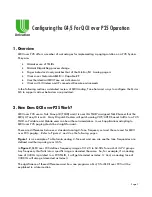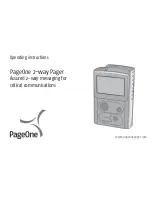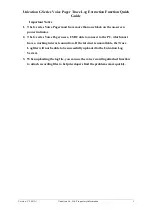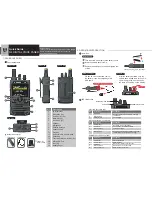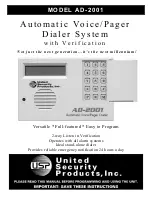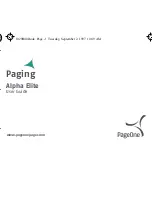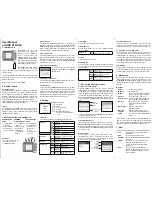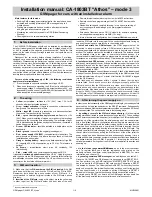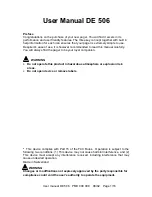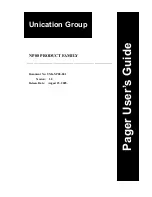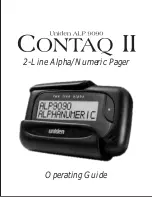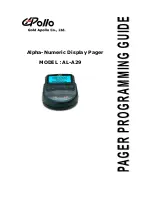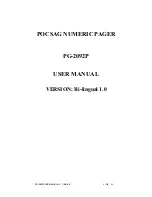
Page 14
Figure 5A
2.
Selective Call with Revert Mode
In this mode, the pager is mute until a QCII ID is decoded. When decoded, the pager alerts, the
voice message is heard and stored. Since it is in Revert Mode the pager will unmute, but not store,
any non-QCII transmissions on the selected TGID. If a valid QCII ID is decoded the pager will alert,
play/store the message and revert back to listening all transmissions on the TGID.
To configure the G4/5 for this behavior follow the same procedure for Selective Call Mode except in
Figure 5A
ENABLE
the Alternative setting.
3.
Monitor Mode
In this mode, the pager unmutes on all transmissions to the selected TGID. If a valid QCII ID is
detected the pager will alert, play/store the message and then continue to monitor all transmissions to
the selected TGID. Any non-QCII transmissions on the selected TGID are not stored.
To configure the G4/5 for this behavior follow the same procedure for Selective Call with Revert
Mode in addition:
a.
Voice Prompt
- Create a prompt for monitor to differentiate this selector knob position from
that of the Selective Call.
b.
In Figure 3A,
ENABLE
the Alternatives setting.
4.
Multiple TGIDs to be Listened to when in Revert and/or Monitor Modes
If one wants to listen to TGID traffic other than the TGID that the QCII IDs are transmitted over this is
possible if the P25 System supports TGID Priority. In this case the TGID with the QCII IDs would be
assigned the highest priority to ensure the page is not missed. The
Priority Talk Group ID Option
setting must be enabled.
NOTE:
If the P25 System does not support TGID Priority one can still listen to multiple TGIDs, but it is
possible a page will be missed.
Summary of Contents for G4
Page 2: ...Page 2 Figure 1...
Page 3: ...Page 3 Figure 2...
Page 7: ...Page 7 Figure 7 Figure 8...
Page 12: ...Page 12 Figure 1A Figure 2A...
Page 13: ...Page 13 Figure 3A Figure 4A...

